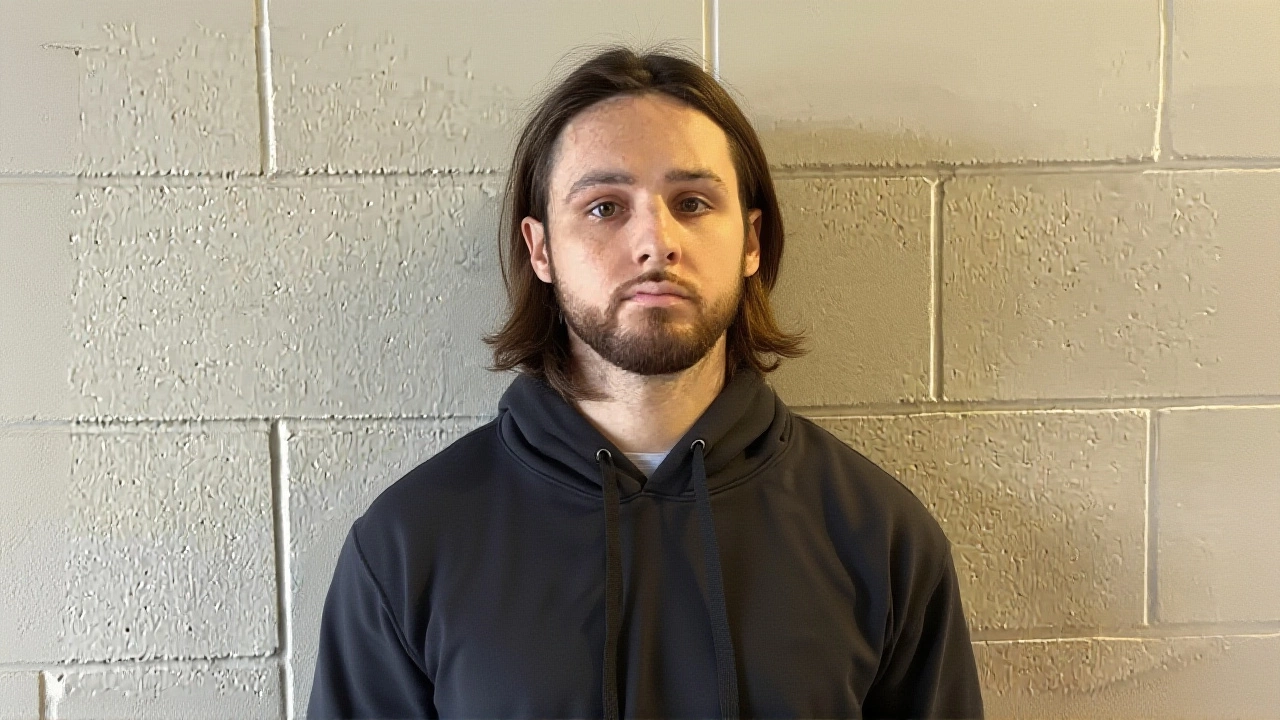
When Jonathan Rinderknecht, Uber driver from Melbourne, Florida, was formally accused of igniting a blaze that became the Palisades Fire, the story quickly turned into a national dilemma about public safety and mental health. The federal criminal complaint, filed by the U.S. Attorney's Office for the Central District of California, details how Rinderknecht allegedly set a small flame on a hiking trail in the Santa Monica Mountains at 12:12 a.m. PST on Jan 1, 2025. Within hours, that spark ignited the infamous Lachman Fire, which smoldered unseen until a gust of Santa Ana wind on Jan 7 turned it into the catastrophic Palisades Fire that razed 6,800 structures and claimed 12 lives in Pacific Palisades, Los Angeles.
Background: A Trail, A Lighter, A Motive?
Rinderknecht’s life before the fire was a patchwork of cross‑coastal moves. The son of Baptist missionaries who spent years in southern France, he grew up playing soccer in Melbourne and later oscillated between Florida, Hollywood, and the upscale Palisades neighbourhood. According to voter registration records, he was still listed at a Hollywood apartment near the historic Roosevelt Hotel as of spring 2025.
Authorities say his behaviour on Dec 31, 2024, hinted at a volatile mindset. Two Uber passengers reported that Rinderknecht appeared "agitated and angry" during his shifts, prompting them to contact local police. After dropping his final passenger just before midnight in Pacific Palisades, he parked near Via La Costa, walked up a trail, and, as the complaint alleges, used a lighter to start the fire. He then called 911, fled, and later returned with an iPhone to film the flames from a nearby hilltop.
Bill Essayli, the acting U.S. Attorney, emphasized the pattern in a press briefing: "A single person's recklessness caused one of the worst fires Los Angeles has ever seen." That statement set the tone for a prosecution that will likely seek the maximum penalty under Title 18, U.S.C. § 844(i).
Investigative Findings: From Lighter to ATF Confirmation
The Bureau of Alcohol, Tobacco, Firearms and Explosives (ATF) quickly confirmed the fire’s origin was an "open flame" and traced it back to the trail where Rinderknecht was seen earlier that night. Digital forensics uncovered ChatGPT‑generated images of a burning forest and a looping French rap video that repeatedly showed fire‑related visuals – evidence the prosecutors say illustrates an "obsession with fire imagery."
Investigators also noted that ATF agents executed a search warrant at Rinderknecht’s Hollywood residence weeks before the arson. A neighbour recalled agents "going in and out" of the unit, a detail that adds another layer to the ongoing legal dispute Rinderknecht had with a neighbour over alleged drug use and physical altercations.
Despite the chaos, the fire crews initially believed they had contained the Lachman Fire on Jan 1. The blaze, however, continued to smolder deep within the root systems of dense chaparral. When the notorious Santa Ana winds arrived on Jan 7, the underground fire burst into full‑scale fury, spreading across the coastal cliffs and sweeping through the Palisades Highlands, including the house where Rinderknecht had been staying.
Responses: From Law Enforcement to Community Outrage
Los Angeles County Fire Department officials described the fire as "one of the top five most destructive wildfires in the county's recorded history." Mayor Karen Bass condemned the act as "a horrific betrayal of public trust" and called for tighter regulations on fire‑dangerous behaviour in wildland‑urban interfaces.
Local residents, many of whom are Hollywood elites and long‑time Palisades families, gathered for vigils on the beach, holding candles and sharing stories of friends lost. One neighbour, who asked to remain anonymous, said, "We thought it was a tragic accident, not a deliberate act. It feels like a wound that will never fully heal."
Legal experts anticipate a prolonged pre‑trial phase. Federal pretrial proceedings are slated for Oct 2025 at the downtown Los Angeles federal courthouse. If convicted, Rinderknecht faces life imprisonment, given the death toll and massive property loss.
Impact Assessment: Numbers, Trauma, and Rebuilding
- 12 fatalities, including two children.
- 6,800 structures destroyed, among them over 300 single‑family homes.
- Estimated insurance losses exceed $4.2 billion.
- Over 25,000 residents displaced for weeks.
- Air quality in Los Angeles County dropped to hazardous levels for ten days.
Economists warn that the fire’s ripple effects could depress local real‑estate values by up to 12 % in the next two years. Mental‑health counselors report a surge in PTSD‑related calls from survivors, underscoring the long‑term human cost.
What’s Next: Legal Battles and Policy Shifts
The federal case will test how aggressively prosecutors can argue intent in arson cases that involve digital footprints like AI‑generated images. Defense attorneys, who have yet to comment publicly, may argue that the evidence of a "fire obsession" is circumstantial.
On the policy front, the California Department of Forestry and Fire Protection (Cal Fire) announced a review of trail‑access protocols in high‑fire‑risk zones. Suggested measures include mandatory permits for nighttime hikes and increased surveillance cameras on popular trailheads.
Community activists are also pushing for legislation that would require mental‑health screenings for individuals flagged for repeated angry or erratic behaviour, a proposal that has sparked a debate about civil liberties versus public safety.
Historical Context: Wildfires and Human‑Caused Ignitions
California’s wildfire season has grown longer and more severe over the past two decades, driven by climate change and expanding urban development into fire‑prone foothills. While natural causes—lightning, spontaneous combustion—account for roughly 60 % of ignitions, human‑caused sparks, whether accidental or deliberate, make up the remaining 40 %.
Notable arson cases, such as the 2017 Thomas Fire, which burned 281,000 acres, illustrate how a single act can cascade into a regional disaster. The Palisades Fire joins a grim roster that includes the 1994 Northridge earthquake‑triggered fires and the 2003 Cedar Fire, which remains the state’s largest recorded blaze.
Experts point out that the convergence of hot, dry conditions, dense vegetation, and strong offshore winds creates a perfect storm for rapid fire spread—conditions that were brutally evident when the Santa Ana winds revived the smoldering Lachman Fire on Jan 7.
Frequently Asked Questions
How does this affect residents of Pacific Palisades?
The fire destroyed over 300 homes and displaced more than 25,000 people, many of whom are still living in temporary housing. Property values have dipped, insurance premiums have risen, and the community is grappling with long‑term trauma and rebuilding challenges.
What evidence linked Jonathan Rinderknecht to the arson?
Federal investigators cited the lighter found at the scene, 911 call logs, iPhone video footage captured by Rinderknecht, and digital records showing he searched for fire‑related images and listened repeatedly to a rap song featuring incendiary visuals. The ATF also confirmed the fire started with an open flame.
What legal penalties could Rinderknecht face if convicted?
He is charged under Title 18, U.S.C. § 844(i) for destruction of property by fire. Given the 12 fatalities and extensive damage, prosecutors are seeking life imprisonment without parole.
How are authorities planning to prevent similar arsons?
Cal Fire is reviewing trail‑access rules, considering nighttime permit systems, and increasing camera surveillance on high‑risk paths. Lawmakers are also debating mental‑health screening measures for individuals flagged for violent or erratic behaviour.
When is the trial scheduled to begin?
Pre‑trial hearings are set for October 2025 at the federal courthouse in downtown Los Angeles, with the full trial expected to commence shortly thereafter, pending motions and discovery.

